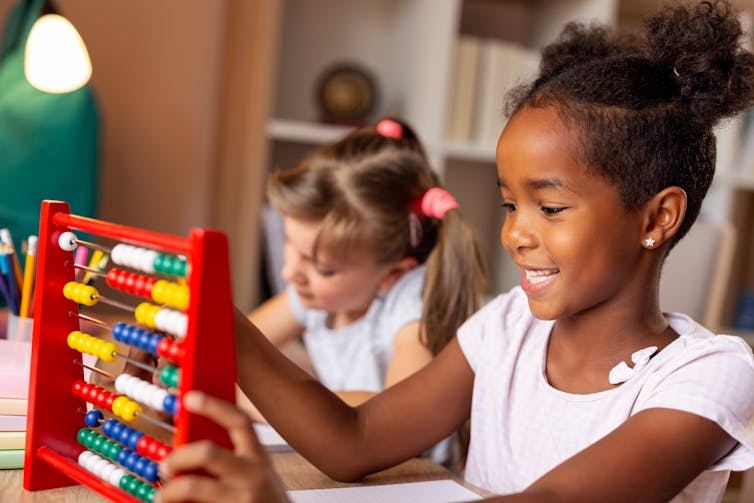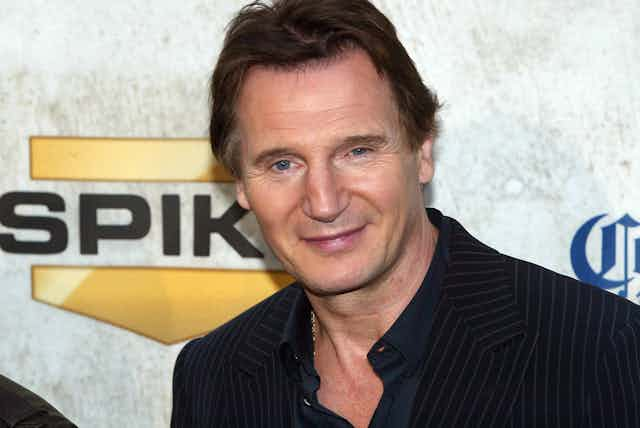The actor Liam Neeson has revealed that he once walked the streets with a weapon, seeking to kill a black man as revenge after someone close to him was raped. Facing a barrage of criticism for his remarks, he contended there was something “primal” about his reaction to the incident, said to have taken place 40 years ago. Responding to the backlash, Neeson has said: “I’m not a racist.”
Referring to something as “primal” makes is sound inevitable, as if the reaction can’t be helped because we are programmed to behave in a certain way when we are angry enough. But is it actually the case that evolution is to blame for how we behave when we get angry? Or do biases that we may not even be aware of actually shape our aggression? Let’s take a look at the evidence.
Although there may be some evolutionary explanations for our preference for people of the same ethnicity, racial biases and stereotypes are not innate – they are largely learned. Young children do not show racial biases similar to adults until they are about five years old, and the stability of such attitudes towards our own or other ethnic group is dependent on their environment when growing up. A white person who has grown up in a multicultural environment would be less likely to react negatively towards them after learning about a single negative incidence. It really is as simple as that.
And when it comes to anger, we may be less in control of our behaviour when we are in a rage. But that doesn’t mean that everyone who gets angry about the rape of a friend would pick up a weapon and walk the streets with it looking for a person of a certain race to kill. Some people may channel their sadness and anger into doing something else – campaigning for justice for rape survivors, joining a charity or perhaps just being angry without acting out that anger. Our experiences and biases do influence who we take our anger out on. What’s more, research has shown that blatant and unambiguous biases – rather than unconscious, moderate ones – can in fact underlie aggressive behaviour and hate crime.
Biased justice system
Racial biases, implicit or explicit, do exist and can influence many aspects of our decision making. For example, young black men are often perceived as aggressive, hostile and threatening the physical safety of others. Sadly, these stereotypes can influence social judgment, as well as the decision making of jurors’ and legal professionals. Even neutral objects such as mobile phones are more likely to be mistaken as dangerous ones (for example guns) in the hands of young black men when compared with young white men. Given the prevalence of such racial biases and how they affect people’s decisions, it is not surprising to find ethnic minorities being overrepresented in the criminal justice system.
According to the non-profit organisation the Innocence Project, nearly 70% of post-conviction DNA exonerees are from ethnic minorities. One of the leading factors contributing to such miscarriages of justice is cross-racial eyewitness misidentification, usually in the form of a white witness wrongly identifying a black suspect. We know that people are less good at recognising faces of people of a different ethnicity than their own. This misidentification can also go the other way round, such as in the case of Sam Hallam, who is a white male victim of a miscarriage of justice being misidentified by non-white witnesses.
Another prominent factor contributing to wrongful conviction is false confession. Not surprisingly, ethnic minorities also are disproportionately overrepresented (approximately 69%) among such exonerees. During police interviews, officers are more likely to judge black suspects as guilty compared to white suspects. Even more disconcertingly, innocent black people also have to wait disproportionately longer for their names to be cleared from criminal records, and spend an average of three more years in prison than innocent white people.
Ways forward
What can we do about bias? To achieve profound and meaningful change, long-term education and positive exposures are necessary. The more we have the opportunity to be exposed to and build friendships with people from other ethnic groups, the less biased we become and more positive attitudes we can foster.

Implicit bias tests and training are an effective way of making us aware of our prejudices, allowing us to change negativing thinking patterns and behaviour. Mindfulness meditation training can also can help reduce implicit racial biases.
Finally, to minimise the effect of biases in the criminal justice system, procedural safeguards such as not exposing legal professionals to information such as racial background before the they make judgement about their evidence at hand can be implemented.
Neeson’s comments reflected the implicit racial biases that many people have – especially towards black men. These biases aren’t innate and they can shape how we view and approach people of different racial-ethnic backgrounds. Luckily, with the advancement of science and knowledge, we can work to reduce them.

